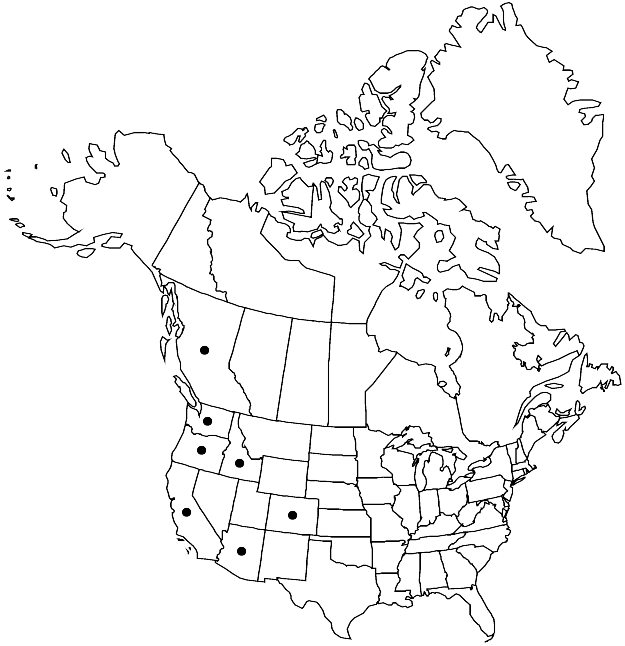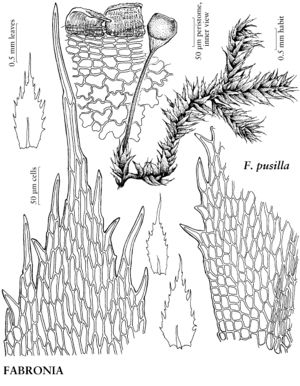Difference between revisions of "Fabronia pusilla"
Atti Accad. Sci. Siena 9: 231, plate 1. 1808.
Illustrated
Treatment appears in FNA Volume 28. Treatment on page 478.
FNA>Volume Importer |
imported>Volume Importer |
||
| (One intermediate revision by the same user not shown) | |||
| Line 50: | Line 50: | ||
|publication year=1808 | |publication year=1808 | ||
|special status=Illustrated | |special status=Illustrated | ||
| − | |source xml=https:// | + | |source xml=https://bitbucket.org/aafc-mbb/fna-data-curation/src/2e0870ddd59836b60bcf96646a41e87ea5a5943a/coarse_grained_fna_xml/V28/V28_747.xml |
|genus=Fabronia | |genus=Fabronia | ||
|species=Fabronia pusilla | |species=Fabronia pusilla | ||
Latest revision as of 21:37, 5 November 2020
Leaves 0.4–0.8 mm; margins ciliate-dentate, teeth often of more than 1 cell; apex acute to long-acuminate; medial laminal cells 30–45 × 9–12 µm.
Phenology: Capsules mature late spring- summer.
Habitat: Rock, bark at base of trees
Elevation: low to high elevations
Distribution

B.C., Ariz., Calif., Colo., Idaho, Oreg., Wash., Mexico (Baja California Sur), Europe, n Africa.
Discussion
Fabronia pusilla is easily distinguished by its long-acuminate and ciliate-dentate leaves.
Selected References
None.
Lower Taxa
None.
